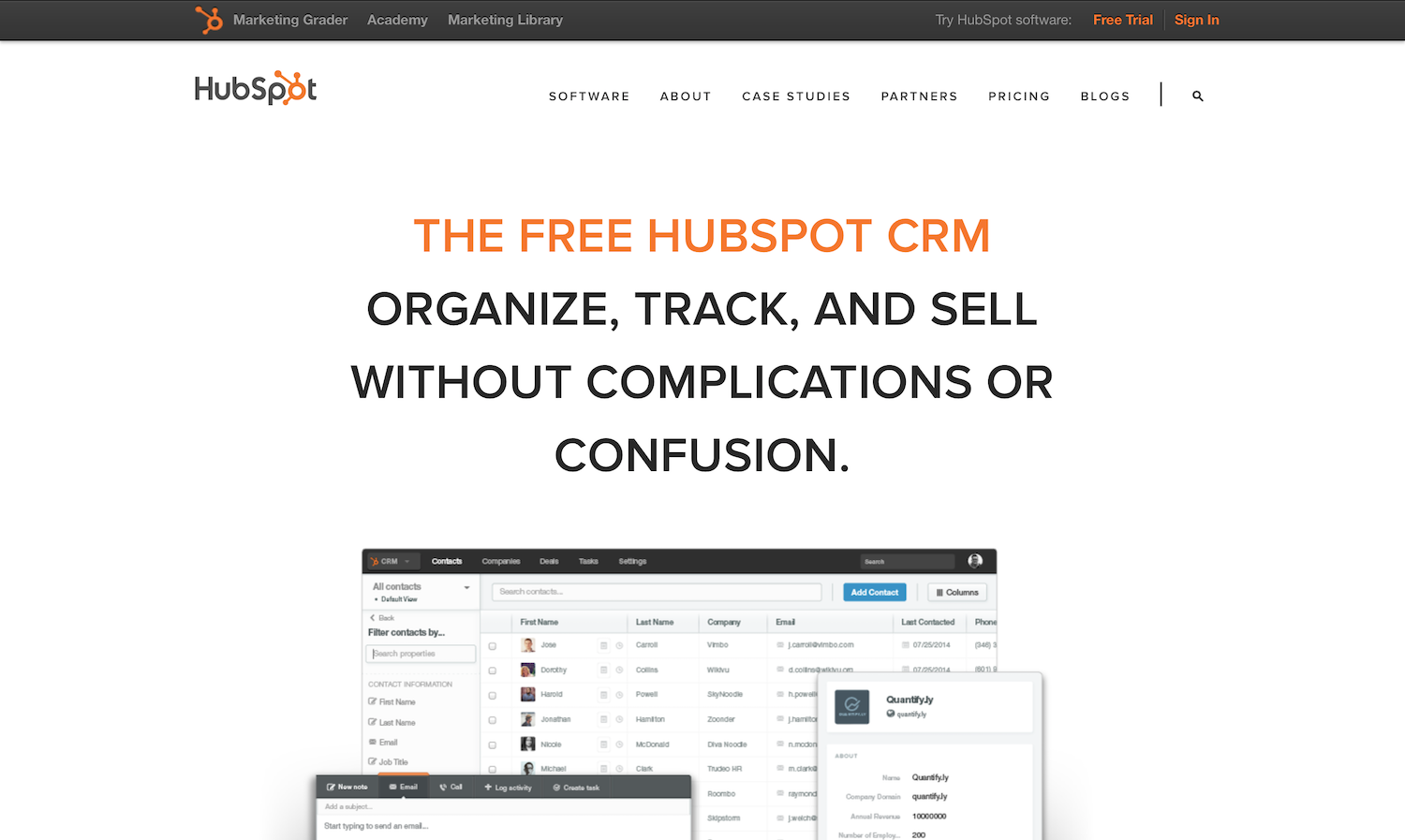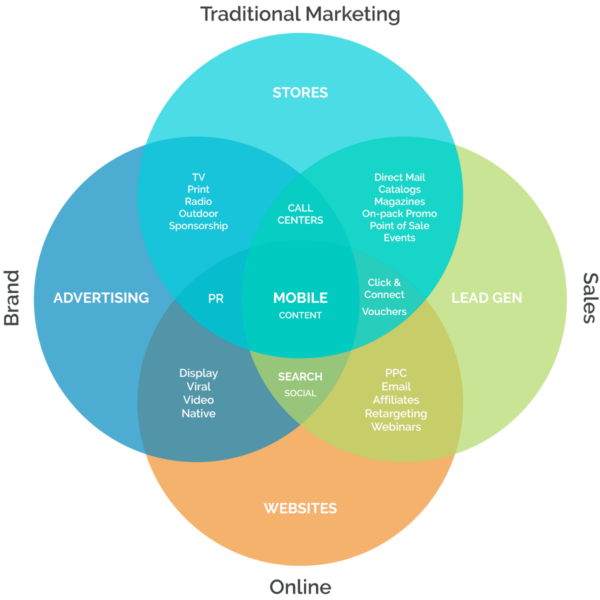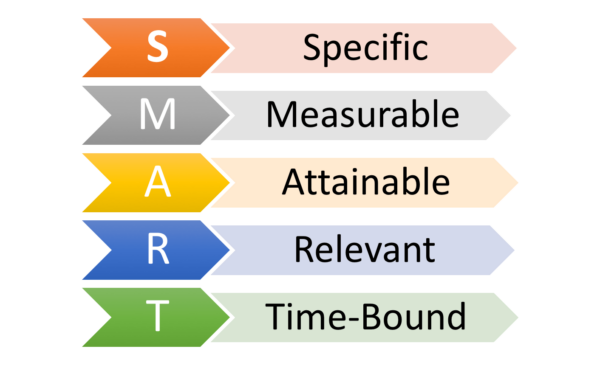
In this post, I want to explore how and why sales and marketing strategies must align. I also want to share some tools that will help you build, monitor and track your campaigns and marketing ROI.
Who Does Sales and Who Does Marketing?
Generally, a business that doesn’t have an in-house marketing team will look for an agency, such as ours, to partner with. In this scenario, they are the sales team and we are the marketing team. Seems simple enough, right? Sadly, no.

There’s one more thing: The sales and marketing goals aren’t always aligned.
When misalignment exists, leads slip through the cracks and become lost. While it’s impossible to create THE end-all perfect lead generation pipeline with a 100 percent closing rate, maximizing the full potential of ALL marketing and sales efforts means you’re getting as close to perfect as possible.
The key is through effective communication between both sides.
The Need for an Aligned Sales and Marketing Strategy
The sales team needs to know AND fully understand what kind of performance data the marketing team relies onto measure success, and vice versa.
The marketing team needs to make sure every lead they’ve generated has the capability to seamlessly transition into becoming the sales team’s responsibility to close.
If the teams are using any automated tools, both need to understand how the other side reads the data – and how to use it to maximize efficiency.
According to The Aberdeen Group’s report:
In 2017, 92% of organizations reported below-average lead conversion rates because of misalignment between their marketing and sales teams. @eminentseo https://www.eminentseo.com/blog/build-aligned-sales-and-marketing-strategy/
Tweet this outA campaign where both halves understand each other’s differences in roles, responsibilities, goals and overall strategy – and have successfully aligned their efforts in a cohesive manner – will be losing fewer leads overall. That’s a win for both sides.
Tracking Every Customer
I get it, we all want MORE SALES! It’s true, but not all businesses have the ability to track their sales to the source. It’s easy if you’re an eCommerce business and the entire sales transaction happens online.
But, what about the brick-and-mortar stores who are using digital marketing to get people into their shops? I guess you could have the cashier ask them how they heard about you, but in the end, is a handful of responses indicating “Google” as the lead source really going to empower you to make better marketing decisions?
I doubt it.
As marketers, how do we even begin to work toward getting “more sales” if we don’t even know which key performance indicators (KPIs) to focus on?
Marketing Key Performance Indicators
Marketers need DATA! The only way any of us are ever going to provide a client with an accurate lead generation report is to have the proper tools and processes in place.
Typical campaign KPIs we track and report on include:
- Organic marketing keyword impressions and rankings
- Website traffic data, per source type (direct, organic, referral, social, paid, etc.)
- Website traffic trends and user behavior
- Conversion rates, per type (phone calls, form fills, eBook downloads, chats, subscribers)
- Off-site marketing conversion rates, per type (email opens, social followers, fan submissions)
- Marketing platform insights, such as increased page likes and followers
- Marketing return on investment (ROI)
In order to track these metrics, we use:
- Google Analytics
- Google Search Console
- Keyword tracking tools
- Call tracking tools
- Website and social platform chat tools
- Platform insights
- Other paid reporting tools
Sales Key Performance Indicators
These KPIs and reports are certainly useful and important to the sales team. But, among those responsible for conversions, you will hear this time and time again: “We only care about sales”.
Sales can be nearly impossible to track for some businesses without the sales team entering data into the tools. How can your marketing team track sales if they only happen offline?
If you are an addiction treatment center, for example, and you take phone calls as a primary lead source, what happens after the call? Do you make notes in a call tracking system? Then what? Does the “lead” get manually placed into a CRM? Do you have a CRM?
If you are a call-centric business or if your sales cycle isn’t completed entirely online, then you MUST have a CRM.
What is a CRM?
A CRM is a customer relationship management tool. This is where you can house your contacts and manage your leads.
Do I still need to notate my call tracking tool if I have a CRM?
YES! Your CRM will help you manage your leads.
If a lead closes and it came in from a phone call, you should always go back to your call tracking system and enter in the conversion information. This allows the marketing team to export the calls and determine which ones converted into sales…and which ones didn’t.
And not just calls, but the source of the call. Don’t you want to know where your conversions are coming from? Was it the Facebook ad campaign or the email marketing?
By scoring the calls and entering in conversion data, the sales AND marketing teams will know what is and isn’t working.
The Difference Between Marketing and Sales Qualified Leads
Now that we all agree the marketing team can’t perform its job without the sales data and input from the sales team, how do we know who is responsible for what?
Marketers generate leads.
Sometimes, however, lead generation focuses on different stages of the buyer’s journey. This means not everyone is ready to BUY NOW.
So, we develop various funnels and lead capture opportunities to catch the various buyers at every stage in the journey.
We then group the leads into two types:
- Marketing Qualified Leads
- Sales Qualified Leads
Marketing qualified leads are typically website visitors who downloaded a gated asset, such as an eBook or brochure, in exchange for their email info. They can also be newsletter subscribers, quiz participants, event attendees or webinar signups.
Really, an MQL can be anyone who connected with us and provided contact information, but has not yet requested a call or more information from the sales team.
Sales qualified leads can start as a marketing lead and turn into a sales qualified lead when they explicitly express interest in purchasing.
Similarly, they can start as a sales qualified lead if they:
- Call
- Initiate a chat
- Request more information
- Fill out a sales form (such as insurance verification, intake form or consultation request)
As marketers, we need a system and the right tools to generate and nurture the marketing qualified leads. We can then convert them into sales leads through a manual process, or we can work with the sales team to align the systems and tools to automate the lead-management process for reduced human error and better lead management overall.
Generally, this system is a CRM.
Marketing and Sales Automation Tools
It might sound complicated, but it’s really not that difficult to manage the tools once you set them up properly and the teams are both trained on how to use them.
Unfortunately, there isn’t one singe tool that will provide the sales and marketing teams with everything they need.
As outlined above, your marketing may rely on several tools to track and report on your multi-channel marketing campaigns.
Today, most of the paid tools open up their API so developers can code integrations. Still, this does require an expert who understands the technical side of things if you want to automate the process.
Weighing the Pros and Cons
You can automate most of the marketing and sales funnel, but there will always be some pros and cons when doing so. Automation tools are pricey and require a professional team to setup and manage.
On the other hand, you can manually manage your leads and save costs on automation tools and supporting marketing materials – but at what cost to your bottom line? How many leads get forgotten when there is no CRM to store and manage them? How much time is wasted manually emailing leads that aren’t qualified for the sales team?
Automation costs more on the front end to set up and manage. But in the long run, you’ll save on:
- Avoiding human error
- Automating lead capture
- Paying an employee to follow up with the unqualified leads
- Automating lead nurturing
- Reusing emails and assets in automation campaigns
- Leveraging the tool data in the marketing strategy development
Even if you decide not to automate, you still need to manage and track your leads. And unless your business gets less than a handful of leads a month and you can manage them in a shared Google document or other free tool, you should consider getting a CRM.
There are free CRMs, such as the HubSpot CRM FREE, that allow you to test using a tool to manage your sales pipeline without making a huge investment into customization and integrations. It’s literally free, forever. We like that.
Creating an Aligned Marketing and Sales Strategy
We begin by outlining all of the marketing channels. This should include both digital and direct marketing sources:
We then like to think through the possible conversion actions, per source. This includes:
- Calls
- Chats
- Downloads
- Subscribes
- Likes
- Messages
- Submissions
- Form fills
All of these user actions or conversions are trackable with:
- Call tracking
- Chat tracking
- Website form capture
- CRM lead capture
- Social insights
- Email tools
- Reporting tools
The sales team is responsible for:
- Scoring calls
- Scoring chats
- Managing sales leads
- Entering in sales conversion data
- Providing feedback to the marketing team
The Marketing Team’s Responsibilities
The marketing team is responsible for:
- Ensuring the tools are set up and integrated properly
- Monitoring social messages
- Generating leads
- Nurturing marketing qualified leads
- Reporting on marketing and sales KPIs
- Using sales data in developing the marketing strategies
Marketing keeps the channels up to date with branded assets, such as:
- Content pages
- Images and graphics
- Videos
- eBooks and white papers
- Blog posts
- New landing pages
- Infographics
- Quizzes
Marketing also performs ongoing strategy development and campaign management tasks, such as:
- Organic outreach
- Guest blogging
- Email campaigns
- Paid ads
- Social engagement
- Media buys
- Keyword research
- Technical SEO
- Editorial calendar development
- Competitive analysis
When both sales and marketing agree to the strategy, we upload it into a shared Google doc and privately share it to the various members of the teams. This way, we all have an open, shared document to reference that outlines the marketing channels.
Using a Google doc also makes it easy to add columns for identifying who is responsible for which leads, the tool used, steps in the lead workflow management, and final “house” for the lead once it’s converted (or dead).
Defining and Measuring Your Marketing and Sales Goals
Each business is unique. Your service offering, your product, your marketplace, your competition, your history, your mission – these are all defining variables. It’s important for your sales and marketing teams to review all of the data, put the data in context and create a shared short- and long-term set of goals.
You’ll need to review:
- What your unique value propositions are: What sets you apart from your competition? Why are you special?
- Who your audience is: Are they searching for your brand or products? Where do they “live” online? Is there a demand for your services?
- Who your competition is: What are they doing with their website and marketing? What do you have to do in order to compete?
- Your existing website and digital assets: Are they optimized for the engines and your audience? Do you need a new design as well as marketing materials?
- What your brand says to the world: Who are you and what is your mission? Does your brand and reputation say “work with me”?
Depending on your overall existing digital footprint, you may need to factor in a bigger budget or a longer amount of time to reach your goals.
Aim for a Mix of Short-Term and Long-Term Victories
It’s possible to speed up the process of lead generation with paid ads and low-hanging-fruit opportunities. The only time these shortcuts wouldn’t apply is with your organic marketing, because there is no amount of money you can spend to speed up the process of building trust within your niche. Trust comes with age, and age comes with time.
With a multi-channel marketing campaign, your goals should be aimed at short-term wins and long-term gains. Even paid ad campaigns take time to mature and gain better quality scores for improved ad placement and click-through rates.
You should aim for month-over-month increases in the important marketing KPIs, but you should estimate marketing ROI for a full campaign on a quarterly or yearly basis.
Goals vs. Objectives
Your goals may be specific desired business results, such as:
- Adding more sales funnels
- Automating the sales cycle
- Gaining a specific percentage of repeat customers
- Generating a specific number of leads
Whereas, the overall marketing objectives may be broader, such as:
- Brand awareness
- Product awareness
- Fan and social follower growth
- Marketing lead generation
- Lowering the cost per acquisition
- Growing market share
- Reputation management
Although it may seem like a good idea to target all of these objectives in your strategies, you may want to focus on one or two at a time and create a plan to expand into additional areas as you go.
Setting SMART Goals
Once you’ve developed a strategy and have a clear plan on which marketing objectives you want to focus on, it’s time to create the SMART goals.
SMART marketing objectives are:
- Specific: The goals are clearly defined and prioritized.
- Measurable: The goal KPIs are established and tracked.
- Achievable: The team agrees these goals are within their abilities.
- Relevant: The goals relate to the overall brand purpose and mission.
- Time-Bound: The goals have a timeline, milestones and deliverables.
Final Tip: Assign a Leader
We’ve found the sales and marketing teams work best as a functional unit when there is one primary decision maker. Ultimately, the person who makes decisions on budgets, marketing KPI’s, business objectives and sales goals should understand the strategy and be empowered with the correct data to make an informed decision.
Once you’ve established your short- and long-term goals and have a strategy and a team in place, stick with it! The leader should give the team the freedom to work on its individual expertise, but always regroup and share strategy updates with both sales and marketing in order to ensure a continued, cohesive strategy.
Main Takeaways for Building an Aligned Sales and Marketing Strategy
An alignment between your sales and marketing strategies is crucial for generating high-quality leads and better conversions. When there is a failure in alignment, leads get lost in the pipeline; they slip through the cracks and never reach the closing stage.
To ensure alignment:
- Build a solid line of communication between the teams.
- Develop and manage one strategy plan with clear processes.
- Use tools to monitor and track your progress.
If you are just getting started or your sales and marketing teams have already learned how to work independently of each other’s goals, this may sound like an arduous task. However, once the plan is developed, the tools are set up and the teams are communicating well, you will be thankful you took the time to align your marketing and sales strategies. And, better yet, your bottom line will benefit.








I didn’t know it was possible to check email opens. A lot of times I will delete emails from companies without opening them and I didn’t know they could tell.
Yes, Lauren, email-tracking software is actually quite powerful. Companies use the data to see which parts of their campaign are working versus what could be improved. Even a small change such as the subject headline can help us figure out what kind of message our consumers respond to best, so our strategy can always be reworked to get a better open rate.
If you’re trying to track who opens your outgoing emails, unfortunately Gmail doesn’t come with those features built in, which makes it all the more important to invest in the necessary email-tracking software tools before you begin various email campaigns. Thank you for reading, Lauren!